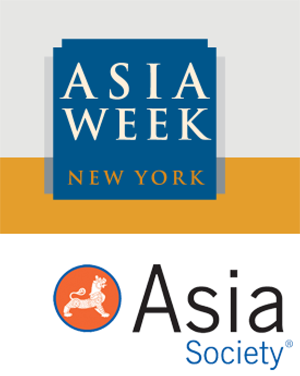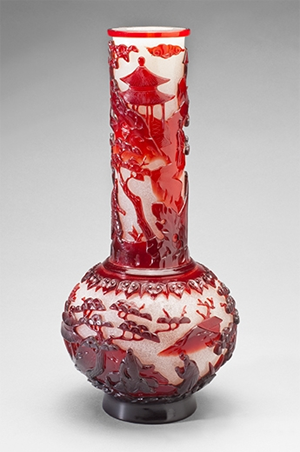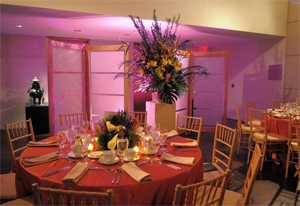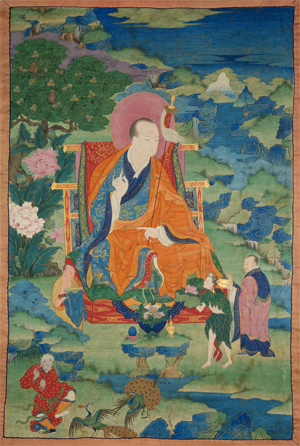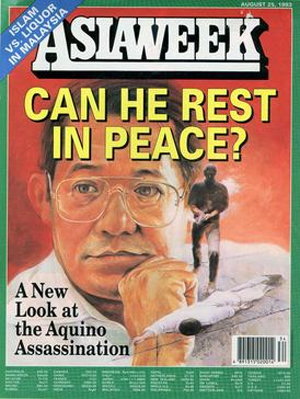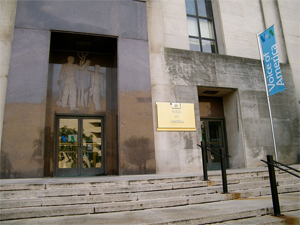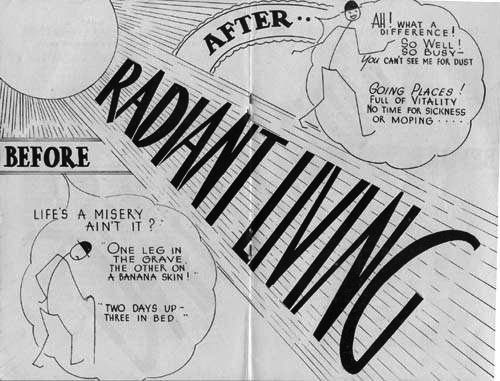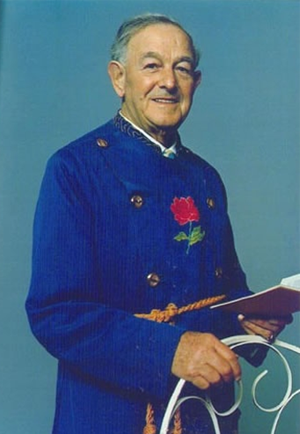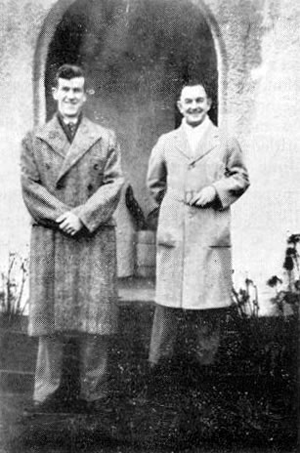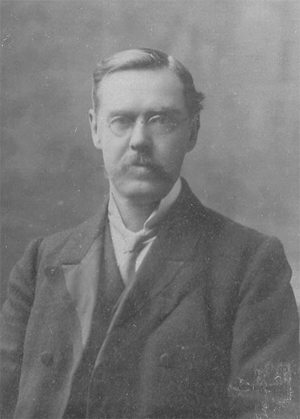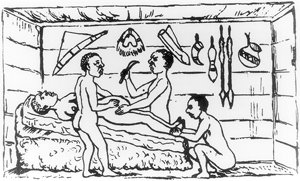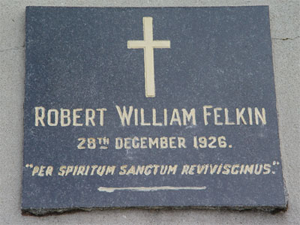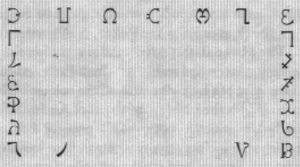Edmund Hillaryby Wikipedia
Accessed: 11/30/19
NOTICE: THIS WORK MAY BE PROTECTED BY COPYRIGHTYOU ARE REQUIRED TO READ
THE COPYRIGHT NOTICE AT THIS LINK BEFORE YOU READ THE FOLLOWING WORK, THAT IS AVAILABLE SOLELY FOR PRIVATE STUDY, SCHOLARSHIP OR RESEARCH PURSUANT TO 17 U.S.C. SECTION 107 AND 108. IN THE EVENT THAT THE LIBRARY DETERMINES THAT UNLAWFUL COPYING OF THIS WORK HAS OCCURRED, THE LIBRARY HAS THE RIGHT TO BLOCK THE I.P. ADDRESS AT WHICH THE UNLAWFUL COPYING APPEARED TO HAVE OCCURRED. THANK YOU FOR RESPECTING THE RIGHTS OF COPYRIGHT OWNERS.
The Aspen Institute and the Club of RomePart of the indoctrination process sought for through
the Aquarian conspiracy was not only to degrade morals and immerse the public in numerous diversions, but also ]to inculcate the basic principles of the New Age cult, towards establishing a
one-world-religion. The means of achieving this objective has been the Environmental movement. This movement was spearheaded by the Aspen Institute, who, together with the United Nations,
the Club of Rome, the Tavistock, and other such organizations originating from
the Round Table, began propagandizing around the issue of nuclear energy. [1] The reason being that proliferation of nuclear energy as an alternative posed a threat to the oil interests that were dominated by the
Rockefellers and the Saudis. However, they claimed deceptively that it was the environment that was being destroyed, and therefore instead rallied against “industrialization” and for
“limits to growth”.
The American oilman, Robert O. Anderson, was a central figure in this agenda. Anderson and his Atlantic Richfield Oil Co. funneled millions of dollars, through their Atlantic Richfield Foundation, into select organizations to confront nuclear energy. Robert O. Anderson’s major vehicle to spread his propaganda strategy among American and European establishment circles, was his Aspen Institute for Humanistic Studies. The Aspen Institute was founded in 1949, by
Aldous Huxley, and John Maynard Hutchins, in commemoration of the 200th birthday of German philosopher and author of
Faust, and a member of the Illuminati, Goethe.
Robert O. Anderson also contributed significant funds to a project initiated by the Rockefeller family, together with Aurelio Peccei and Alexander King, at the Rockefeller’s estate at Bellagio, Italy, called the Club of Rome. In 1972, this Club of Rome, and the U.S. Association of the Club of Rome, gave widespread publicity to their publication of the notorious
“Limits to Growth.”. Supported by research done at MIT, this report concluded that industrialization had to be halted to save the planet from ecological catastrophe.
These organizations were exploiting the panic induced when Paul Ehrlich, a biologist at Stanford, and admirer of
Bertrand Russell, in 1968, wrote his Malthusian projections in a best-selling book called The Population Bomb. In it, Ehrlich suggested, “a cancer is an uncontrolled multiplication of cells; the population explosion is an uncontrolled multiplication of people.... We must shift our efforts from the treatment of the symptoms to the cutting out of the cancer. The operation will demand many apparently brutal and heartless decisions.” [2] Ehrlich also advocated placing birth control chemicals into the world’s food supplies.
The chief individual in this agenda is director of the Aspen Institute, Canadian multi-millionaire
Maurice Strong. Strong is being heralded as the “indispensable man” at the center of the U.N.’s global power. He has served as director of the
World Future Society, trustee of the Rockefeller Foundation and Aspen Institute, and is a member of the Club of Rome. Strong is now Senior Advisor to UN Secretary General Kofi Annan, Senior Advisor to World Bank President James Wolfensohn, Chairman of the Earth Council, Chairman of the
World Resources Institute, Co-Chairman of the Council of the World Economic Forum, and member of Toyota’s International Advisory Board.
However, Strong also now heads the Golden Dawn, operates an international drug ring, and is a top operative for British Intelligence. [3] He was a founding member of both the Planetary Citizens. Strong and other luminaries, like Queen Juliana of the Netherlands, Sir Edmund Hillary, Peter Ustinov, Linus Pauling, Kurt Vonnegut, Leonard Bernstein, John Updike, Isaac Asimov, Pete Seeger, are listed as original endorsers of Planetary Citizens. Founded by Donald Keys, a disciple of Alice Bailey and former UN consultant, and presided over for many years by the late Norman Cousins (CFR), the Planetary Citizens organization supports the expansion of UN power and institutions. In Earth At Omega, Keys maintains:We have meditations at the United Nations a couple of times a week. The meditation leader is Sri Chinmoy, and this is what he said about this situation: “The United Nations is the chosen instrument of God; to be a chosen instrument means to be a divine messenger carrying the banner of God’s inner vision and outer manifestation. One day the world will ... treasure and cherish the soul of the United Nations as its very own with enormous pride, for this soul is all-loving, all-nourishing, and all-fulfilling”. [4]
Maurice Strong also sits on the board of directors, and serves as director of finance, for the Lindisfarne Center. Lindisfarne was founded by New Age philosopher William Irwin Thompson, a former professor of humanities from MIT and Syracuse University. Thompson said:
-- Chapter Twenty-Two: One-World-Religion: The Aspen Institute and the Club of Rome, "Terrorism and the Illuminati," by David Livingston
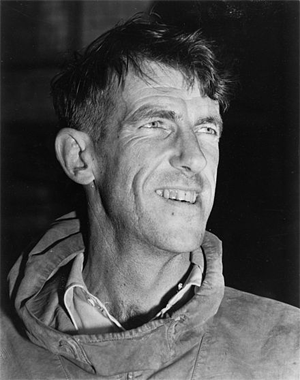
Sir Edmund Hillary
KG ONZ KBE
c. 1953
Born: Edmund Percival Hillary, 20 July 1919, Auckland, New Zealand
Died: 11 January 2008 (aged 88), Auckland City Hospital, Auckland, New Zealand
Known for: With Tenzing Norgay, first to reach summit of Mount Everest
Spouse(s): Louise Mary Rose (m. 1953; died 1975)
June Mulgrew (m. 1989; his death 2008)
Children: Peter Sarah Belinda
Sir Edmund Percival Hillary KG ONZ KBE (20 July 1919 – 11 January 2008) was a New Zealand mountaineer, explorer, and philanthropist.
On 29 May 1953, Hillary and Nepalese Sherpa mountaineer Tenzing Norgay became the first climbers confirmed to have reached the summit of Mount Everest. They were part of the ninth British expedition to Everest, led by John Hunt. From 1985 to 1988 he served as New Zealand's High Commissioner to India and Bangladesh and concurrently as Ambassador to Nepal.Hillary became interested in mountaineering while in secondary school. He made his first major climb in 1939, reaching the summit of Mount Ollivier.[1] He served in the Royal New Zealand Air Force as a navigator during World War II.
Prior to the Everest expedition, Hillary had been part of the British reconnaissance expedition to the mountain in 1951 as well as an unsuccessful attempt to climb Cho Oyu in 1952.
As part of the Commonwealth Trans-Antarctic Expedition he reached the South Pole overland in 1958. He subsequently reached the North Pole, making him the first person to reach both poles and summit Everest.
Following his ascent of Everest, Hillary devoted himself to assisting the Sherpa people of Nepal through the Himalayan Trust, which he established. His efforts are credited with the construction of many schools and hospitals in Nepal. Hillary had numerous honours conferred upon him, including the Order of the Garter in 1995. Upon his death in 2008, he was given a state funeral in New Zealand.
Early life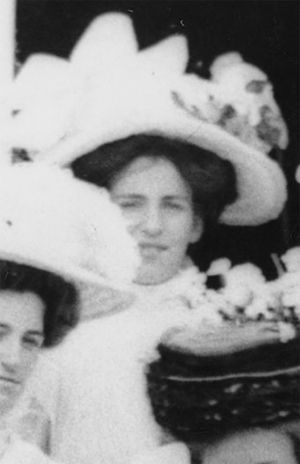 Hillary's mother Gertrude Clark, 1909
Hillary's mother Gertrude Clark, 1909Hillary was born to Percival Augustus and Gertrude (née Clark) Hillary in Auckland, New Zealand, on 20 July 1919.[2][3] His father Percy had served at Gallipoli with the 15th (North Auckland) Regiment, and was discharged "medically unfit" from the Army in 1916; he had married Gertrude after his return to New Zealand. His grandparents had emigrated from Yorkshire to northern Wairoa in the mid-19th century.[4]
His family moved to Tuakau, south of Auckland, in 1920, after Percy was allocated eight acres (3.2 ha) of land there as a returned soldier.[3] Percy had been a journalist prewar, and soon became founding editor of the weekly Tuakau District News as well as an apiarist. Ed had a sister June (born 1917) and a brother Rex (born 1920).[5]
Hillary was educated at Tuakau Primary School and then Auckland Grammar School.[3] He finished primary school aged 11 or two years early, and at "Grammar" achieved average marks.[6] His mother wanted him to go to a "good school" and he commuted by train, cycling to Tuakau station before 7 am and returning after 6 pm for 3½ years (a one-hour and 40 minutes journey each way) until the family moved to Remuera, Auckland in 1935, his last of four years at "Grammar".[7]
He was initially smaller than his peers and shy, and did not enjoy "Grammar", where commuting barred him from after-school activities. He grew to be 6 feet 2 inches (188 cm)[8] and gained confidence after taking up boxing.
He became interested in climbing when he was 16 following a 1935 school trip to Mount Ruapehu, after which
he showed more interest in tramping than in studying and said he "wanted to see the world".[9] He then attended Auckland University College, and joined the Tramping Club there. But in 1938 "after two notably unsuccessful years studying mathematics and science" he gave up on formal education.[10]
He then became an apiarist (beekeeper) with his father and brother Rex; with 1600 hives to attend, thousands of 90 lb (41 kg) boxes of honey comb to handle, and 12 to 100 bee-stings daily.[10][2][11] So he kept bees in summer, and concentrated on climbing in winter.[12] His father also edited the journal "The N.Z. Honeybee" and his mother Gertrude was famous for breeding and selling queen bees.[13][14][15]
In 1938 he went to hear Herbert Sutcliffe, the proponent of a life philosophy called "Radiant Living", with his family. The family all became foundation members, and his mother became its secretary in 1939. He went to Gisborne as Sutcliff's assistant, and in 1941 sat examinations to become a teacher of Radiant Living, getting a 100% pass mark. His test lecture was on "Inferiority – cause and cure". He said of his five-year association with the movement that "I learned to speak confidently from the platform; to think more freely on important topics; to mix more readily with a wide variety of people". Tenets included healthy eating (the salads that June took to university for lunch) and pacifism. He joined the Radiant Living Tramping Club, and further developed his love of the outdoors in the Waitakere Ranges.[16][17]
In 1939 he completed his first major climb, reaching the summit of Mount Ollivier, near Aoraki / Mount Cook in the Southern Alps.[3] Climbing brought new friends; Harry Ayres and George Lowe became "the first real friends I'd ever had".[18]
World War II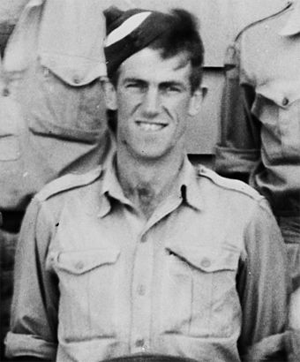 Hillary in Royal New Zealand Air Force uniform at Delta Camp, near Blenheim, New Zealand, during World War II
Hillary in Royal New Zealand Air Force uniform at Delta Camp, near Blenheim, New Zealand, during World War IIAt the outbreak of World War II, Hillary applied to join the Royal New Zealand Air Force (RNZAF) but quickly withdrew the application, later writing that he was "harassed by [his] religious conscience".[19] In 1943, with the Japanese threat in the Pacific and the arrival of conscription, he joined the RNZAF as a navigator in No. 6 Squadron RNZAF and later No. 5 Squadron RNZAF on Catalina flying boats.[19][20] In 1945, he was sent to Fiji and to the Solomon Islands, where he was badly burnt in an accident.[19]
ExpeditionsIn January 1948, Hillary and others ascended the south ridge of Aoraki / Mount Cook, New Zealand's highest peak.[21] In 1951 he was part of a British reconnaissance expedition to Everest led by Eric Shipton,[22][a] before joining the successful British attempt of 1953. In 1952, Hillary and George Lowe were part of the British team led by Shipton, that attempted Cho Oyu.[23] After that attempt failed due to the lack of route from the Nepal side, Hillary and Lowe crossed the Nup La pass into Tibet and reached the old Camp II, on the northern side, where all the previous expeditions had camped.[24]
1953 Everest expeditionMain article: 1953 British Mount Everest expedition
In 1949, the long-standing climbing route to the summit of Everest was closed by Chinese-controlled Tibet. For the next several years, Nepal allowed only one or two expeditions per year.[26] A Swiss expedition (in which Tenzing took part) attempted to reach the summit in 1952, but was forced back by bad weather around 800 feet (240 m) below the summit.[27] In 1952 Hillary learned that he and Lowe had been invited by the Joint Himalayan Committee for the 1953 British attempt and immediately accepted.[28] Hunt wrote that Hillary's
testing in the Himalayas had shown that he would be a very strong contender, not only for Everest, but for an eventual summit party. When I met Shipton last autumn I well remember his prophesying this – and how right he was. Quite exceptionally strong and abounding in a restless energy, possessed of a thrusting mind which swept away all unproven obstacles, Ed Hillary's personality had made an imprint on my mind, through his Cho Oyu and Reconnaissance friends and through his letters to me.[29]
On the expedition, Hunt mentions several times discussing plans with Evans and Hillary.[30]
Shipton was named as leader but was replaced by Hunt. Hillary had objected but was immediately impressed by Hunt's energy and determination.[31] Hillary had intended to climb with Lowe, but Hunt named two teams for the ascent: Tom Bourdillon and Charles Evans; and Hillary and Tenzing.[32] Hillary, therefore, made a concerted effort to forge a working friendship with Tenzing.[31][33]
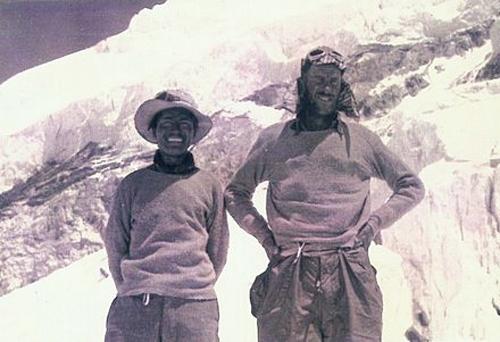 Tenzing and Hillary
Tenzing and HillaryThe Hunt expedition totalled over 400 people, including 362 porters, 20 Sherpa guides, and 10,000 pounds (4,500 kg) of baggage.[34][35] Lowe supervised the preparation of the Lhotse Face, a huge and steep ice face, for climbing. Hillary forged a route through the treacherous Khumbu Icefall.[36][37]
The expedition set up base camp in March 1953 and, working slowly, set up its final camp at the South Col at 25,900 feet (7,890 m). On 26 May, Bourdillon and Evans attempted the climb but turned back when Evans' oxygen system failed. The pair had reached the South Summit, coming within 300 vertical feet (91 m) of the summit.[35][38] Hunt then directed Hillary and Tenzing to attempt the summit.[38]
Snow and wind delayed them at the South Col for two days. They set out on 28 May with the support of Lowe, Alfred Gregory, and Ang Nyima.[39] The two pitched a tent at 27,900 feet (8,500 m) on 28 May, while their support group returned down the mountain.[40] On the following morning Hillary discovered that his boots had frozen solid outside the tent. He spent two hours warming them over a stove before he and Tenzing, wearing 30-pound (14 kg) packs, attempted the final ascent.[41] The final obstacle was the 40-foot (12 m) rock face now called "Hillary Step"; Hillary later wrote:
I noticed a crack between the rock and the snow sticking to the East Face. I crawled inside and wriggled and jammed my way to the top ... Tenzing slowly joined me and we moved on. I chopped steps over bump after bump, wondering a little desperately where the top could be. Then I saw the ridge ahead dropped away to the north and above me on the right was a rounded snow dome. A few more whacks with my ice-axe and Tenzing and I stood on top of Everest.[42]
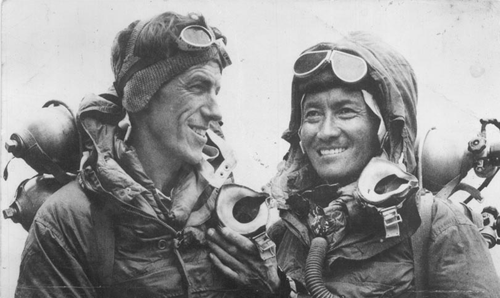 Hillary and Tenzing on return from the summit of Everest
Hillary and Tenzing on return from the summit of EverestTenzing later wrote that Hillary took the first step onto the summit and he followed. They reached Everest's 29,028 ft (8,848 m) summit – the highest point on earth – at 11:30 am.[2][43]
They spent about 15 minutes at the summit. Hillary took a photo of Tenzing posing with his ice-axe, but there is no photo of Hillary. BBC News attributed this to Tenzing's having never used a camera;[44][45] Tenzing's autobiography says that Hillary simply declined to have his picture taken. They also took photos looking down the mountain.[45]
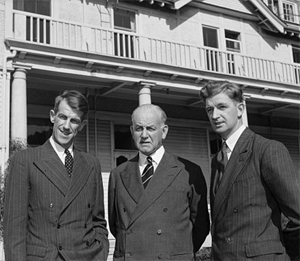 Hillary (left) and George Lowe (right) with Governor-General Sir Willoughby Norrie at Government House, Wellington, 20 August 1953
Hillary (left) and George Lowe (right) with Governor-General Sir Willoughby Norrie at Government House, Wellington, 20 August 1953Tenzing left chocolates at the summit as an offering, and Hillary left a cross given to him by John Hunt.[46] Their descent was complicated by drifting snow which had covered their tracks. The first person they met was Lowe; Hillary said, "Well, George, we knocked the bastard off."[8]
They returned to Kathmandu a few days later and learned that Hillary had already been appointed a Knight Commander of the Order of the British Empire and Hunt a Knight Bachelor.[47] News reached Britain on the day of Queen Elizabeth II's coronation, and the press called it a coronation gift.[48] The 37 members of the party later received the Queen Elizabeth II Coronation Medal with mount everest expedition engraved along the rim.[49] In addition to the knighting of Hillary and Hunt, Tenzing – ineligible for knighthood as a Nepalese citizen – received the George Medal.[50][51][52] Tenzing also received the Star of Nepal from King Tribhuvan.[53]
After Everest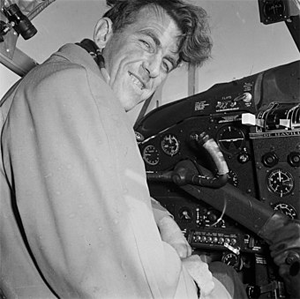 In the cockpit of the Commonwealth Trans-Antarctic Expedition's DHC-2, 1956
In the cockpit of the Commonwealth Trans-Antarctic Expedition's DHC-2, 1956Hillary climbed ten other peaks in the Himalayas on further visits in 1956, 1960–1961, and 1963–1965. He also reached the South Pole as part of the Commonwealth Trans-Antarctic Expedition, for which he led the New Zealand section, on 4 January 1958. His party was the first to reach the Pole overland since Amundsen in 1911 and Scott in 1912, and the first ever to do so using motor vehicles.[54]
In 1960 Hillary organized an expedition to search for the fabled abominable snowman.[55] Hillary was with the expedition for five months, although it lasted for ten.[56] No evidence of Yetis was found, instead footprints and tracks were proven to be from other causes. During the expedition, Hillary travelled to remote temples which contained "Yeti scalps"; however after bringing back three relics, two were shown to be from bears and one from a goat antelope.[57][58] Hillary said after the expedition: "The yeti is not a strange, superhuman creature as has been imagined. We have found rational explanations for most yeti phenomena".[59] In 1960-61 he was accompanied by Griffith Pugh in the Silver hut expedition, when Pugh showed that Mount Everest could be climbed without oxygen. An assault on Makalu, the world's fifth-highest mountain, was unsuccessful.
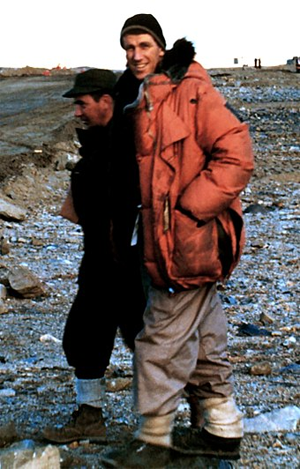 Hillary in 1957 after accompanying the first plane to land at the Marble Point ground air strip, Antarctica
Hillary in 1957 after accompanying the first plane to land at the Marble Point ground air strip, AntarcticaIn 1962 he was a guest on the television game show What's My Line?; he stumped the panel, comprising Dorothy Kilgallen, Arlene Francis, Bennett Cerf, and Merv Griffin.[60] In 1977, he led a jetboat expedition, titled "Ocean to Sky", from the mouth of the Ganges River to its source.[61] From 1977 to 1979 he commentated aboard Antarctic sightseeing flights operated by Air New Zealand.[62] In 1985, he accompanied Neil Armstrong in a small twin-engined ski plane over the Arctic Ocean and landed at the North Pole. Hillary thus became the first man to stand at both poles and on the summit of Everest.[63][64][65][66] This accomplishment inspired generations of explorers to compete over what later was defined as Three Poles Challenge. In January 2007, Hillary travelled to Antarctica as part of a delegation commemorating the 50th anniversary of the founding of Scott Base.[67][68][69]
Public recognition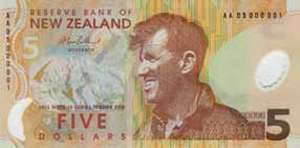 Hillary on the New Zealand five-dollar note
Hillary on the New Zealand five-dollar noteOn 6 June 1953, Hillary was appointed Knight Commander of the Order of the British Empire, and he received the Queen Elizabeth II Coronation Medal the same year.[70] On 6 February 1987, he was the fourth appointee to the Order of New Zealand.[71] He was also awarded the Polar Medal in 1958 for his part in the Commonwealth Trans-Antarctic Expedition,[72][73] the Order of Gorkha Dakshina Bahu, 1st Class of the Kingdom of Nepal in 1953, and the Coronation Medal in 1975.[74] On 22 April 1995 Hillary was appointed Knight Companion of The Most Noble Order of the Garter.[75][76] On 17 June 2004 Hillary was awarded Commander's Cross of the Order of Merit of the Republic of Poland.[77] The Government of India conferred on him its second highest civilian award, the Padma Vibhushan, posthumously, in 2008.[78]
To mark the 50th anniversary of the first successful ascent of Everest, the Nepalese government conferred honorary citizenship upon Hillary at a special Golden Jubilee celebration in Kathmandu, Nepal. He was the first foreign national to receive that honour.[79][15]
Since 1992, New Zealand's $5 note has featured Hillary's portrait, making him the only living person not a current head of state ever to appear on a New Zealand banknote. In giving his permission, Hillary insisted that Aoraki / Mount Cook rather than Mount Everest be used as the backdrop.[80][81]
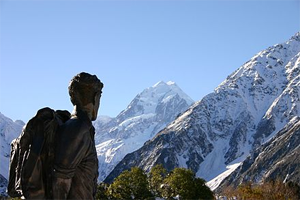 Statue of Hillary gazing towards Aoraki / Mount Cook, one of his favourite peaks[82]
Statue of Hillary gazing towards Aoraki / Mount Cook, one of his favourite peaks[82]Annual Reader's Digest polls from 2005 to 2007 named Hillary as "New Zealand's most trusted individual".[83][84]
Hillary's favoured New Zealand charity was the Sir Edmund Hillary Outdoor Pursuits Centre, of which he was patron for 35 years.[85] He was particularly keen on how this organisation introduced young New Zealanders to the outdoors in a very similar way to his first experience of a school trip to Mt Ruapehu at the age of 16. A 2.3-metre (7.5 ft) bronze statue of Hillary was erected outside The Hermitage Hotel at Mount Cook Village; it was unveiled by Hillary himself in 2003.[86] Various streets, institutions and organisations around New Zealand and abroad are named after him – for example, the Sir Edmund Hillary Collegiate in Otara, which was established by Hillary in 2001.[87]
Two Antarctic features are named after Hillary. The Hillary Coast is a section of coastline south of Ross Island and north of the Shackleton Coast.[88] The Hillary Canyon, an undersea feature in the Ross Sea, appears on the General Bathymetric Chart of the Oceans, published by the International Hydrographic Organization.[89]
Personal life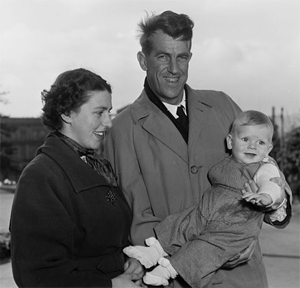 Hillary, with first wife, Louise, and son, Peter, 1955
Hillary, with first wife, Louise, and son, Peter, 1955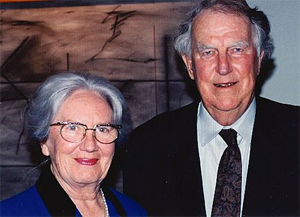 Sir Edmund with his second wife, Lady Hillary, 2000
Sir Edmund with his second wife, Lady Hillary, 2000Hillary married Louise Mary Rose on 3 September 1953, soon after the ascent of Everest; he admitted he was terrified of proposing to her and relied on her mother to propose on his behalf.[11][12][90] They had three children: Peter (born 1954), Sarah (born 1955) and Belinda (1959–1975).[2][38] In 1975 while en route to join Hillary in the village of Phaphlu, where he was helping to build a hospital, Louise and Belinda were killed in a plane crash near Kathmandu airport shortly after take-off.[11] In 1989 he married June Mulgrew, the widow of his close friend Peter Mulgrew, who died on Air New Zealand Flight 901 in 1979.[12][91]
His son Peter Hillary also became a climber, summiting Everest in 1990. In May 2002 Peter climbed Everest as part of a 50th anniversary celebration; Jamling Tenzing Norgay (son of Tenzing who had died in 1986) was also part of the expedition.[92]
Hillary's home for most of his life was a property on Remuera Road in Auckland City,[93] where he enjoyed reading adventure and science fiction novels in his retirement.[93] He also built a bach at Whites Beach,[94] one of Auckland's west coast beaches in the former Waitakere City, between Anawhata and North Piha;[95][96] a friend called it Hillary's place of solace, where he could escape media attention.[94]
The Hillary family has had a connection with the west coast of Auckland since 1925, when Louise's father built a bach at Anawhata.[97] The family donated land at Whites Beach that is now crossed by trampers on the Hillary Trail, named for Edmund.[98] Hillary said of the area: "That is the thing that international travel brings home to me – it's always good to be going home. This is the only place I want to live in; this is the place I want to see out my days."[99]
PhilanthropyFollowing his ascent of Everest he devoted himself to assisting the Sherpa people of Nepal through the Himalayan Trust, which he established in 1960[100] and led until his death in 2008. His efforts are credited with the construction of many schools and hospitals in this remote region of the Himalayas. He was the Honorary President of the American Himalayan Foundation, a United States non-profit body that helps improve the ecology and living conditions in the Himalayas. He was also the Honorary President of Mountain Wilderness, an international NGO dedicated to the worldwide protection of mountains.[101]
Political involvementHillary supported the Labour Party in the 1975 New Zealand general election, as a member of the "Citizens for Rowling" campaign. His involvement in this campaign was seen as precluding his nomination as Governor-General;[102] the position was offered to Keith Holyoake in 1977. In 1985, Hillary was appointed New Zealand High Commissioner to India (concurrently High Commissioner to Bangladesh and Ambassador to Nepal) and spent four and a half years based in New Delhi.[103]
In 1975, Hillary served as a vice president for the Abortion Law Reform Association of New Zealand,[104] a national pro-choice advocacy group.[105] He was also a patron of REPEAL, an organization seeking repeal of the restrictive Contraception, Sterilisation, and Abortion Act 1977.[104]
Death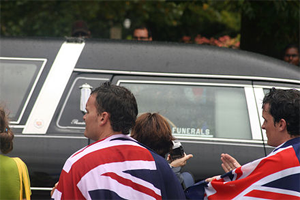 People draped in the Flag of New Zealand as Hillary's hearse passes
People draped in the Flag of New Zealand as Hillary's hearse passesOn 22 April 2007, while on a trip to Kathmandu, Hillary suffered a fall, and was hospitalised after returning to New Zealand.[106] On 11 January 2008 he died of heart failure at Auckland City Hospital.[107] Flags were lowered to half-mast on New Zealand public buildings and at Scott Base in Antarctica,[108] and Prime Minister Helen Clark called Hillary's death a "profound loss to New Zealand".[109]
On 21 January, Hillary's casket was taken into Holy Trinity Cathedral, Auckland, to lie in state.[110] A state funeral was held on 22 January 2008,[111] after which his body was cremated. On 29 February 2008 most of his ashes were scattered in Auckland's Hauraki Gulf per his desire.[112] The remainder went to a Nepalese monastery near Everest; a plan to scatter them on the summit was cancelled in 2010.[113]
Posthumous tributesIn January 2008, Lukla Airport, in Lukla, Nepal, was renamed to Tenzing–Hillary Airport in recognition of their promotion of its construction.[114][115] On 2 April 2008, a service of thanksgiving in Hillary's honour at St George's Chapel at Windsor Castle was attended by Queen Elizabeth II, New Zealand dignitaries including Prime Minister Helen Clark, and members of Hillary's and Norgay's families; Gurkha soldiers from Nepal stood guard outside the ceremony.[116][117] In October 2008, it was announced that future rugby test matches between England and New Zealand would be played for the Hillary Shield.[118] In 2009 the Duke of Edinburgh's Award in New Zealand – formerly the Young New Zealanders' Challenge – was renamed "The Duke of Edinburgh's Hillary Award".[119] On 5 November 2008, a commemorative set of five stamps was issued by New Zealand Post.[120][121]
There have been many calls for lasting tributes to Hillary. The first major public tribute has been by way of the "Summits for Ed" tribute tour organised by the Sir Edmund Hillary Foundation.[122] This tribute tour went from Bluff at the bottom of the South Island to Cape Reinga at the tip of the North Island, visiting 39 towns and cities along the way. In each venue, school children and members of the public were invited to join together to climb a significant hill or site in their area to show their respect for Hillary. The public were also invited to bring small rocks or pebbles that had special significance to them, that would be included in a memorial to Hillary at the base of Mt Ruapehu, in the grounds of the Sir Edmund Hillary Outdoor Pursuits Centre. Funds donated during the tour are used by the foundation to sponsor young New Zealanders on outdoor courses. Over 8,000 persons attended these "Summit" climbs between March and May 2008.[123]
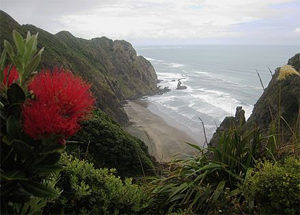 View from the Hillary Trail
View from the Hillary TrailThe tribute song "Hillary 88", by the New Zealand duo The Kiwis, is the official world memorial song for Hillary, with the endorsement of Lady Hillary.[124]
A four-day track in the Waitakere Ranges, along Auckland's west coast, is named the Hillary Trail,[125] in honour of Hillary.[98] Hillary's father-in-law, Jim Rose, who had built a bach at Anawhata in 1925, wrote in his 1982 history of Anawhata Beach, "My family look forward to the time when we will be able to walk from Huia to Muriwai on public walking tracks like the old-time Maori could do".[97][126] Hillary loved the area, and had his own bach near Anawhata. The track was opened on 11 January 2010, the second anniversary of Hillary's death.[107][127] Rose Track, descending from Anawhata Road to Whites Beach, is named after the Rose family.[99][128]
The South Ridge of Aoraki / Mount Cook, New Zealand's highest mountain, was renamed Hillary Ridge on 18 August 2011. Hillary and three other climbers were the first party to successfully climb the ridge in 1948.[129] In September 2013 the Government of Nepal proposed naming a 7,681 metres (25,200 ft) mountain in Nepal Hillary Peak in his honour.[130] After the New Horizons mission discovered a mountain range on Pluto on 14 July 2015, it was informally named Hillary Montes (Hillary Mountains) by NASA.[131]
The Sir Edmund Hillary Mountain Legacy Medal, awarded by the Nepalese NGO Mountain Legacy "for remarkable service in the conservation of culture and nature in mountainous regions" was inaugurated in 2003, with the approval of Sir Edmund Hillary. A bronze bust of Hillary (circa 1953) by Ophelia Gordon Bell is in the Te Papa museum in Wellington, New Zealand.[132] The Sir Edmund Hillary Archive was added to the UNESCO Memory of the world archive in 2013,[133] it is currently held by Auckland War Memorial Museum.[134]
Arms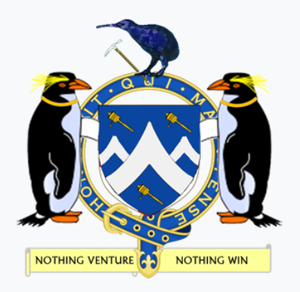 Coat of arms of Edmund Hillary
Coat of arms of Edmund Hillary Crest: An azure kiwi grasping an ice axe.
Escutcheon: A stylised mountain range surrounded by three prayer wheels.
Supporters: A Fiordland crested penguin wearing a plain collar on either side.
Compartment: An iceflow proper.
Motto: Nothing venture, nothing win
Orders: The Order of the Garter ribbon.
Honi soit qui mal y pense
(Shame be to him who thinks evil of it)
PublicationsBooks written by Edmund Hillary
Title / Year / Publisher / ISBN/ASIN / Co-author / Ref
High Adventure[ b] 1955 Hodder & Stoughton[c] ISBN 1-932302-02-6[d] n/a [135][55]
East of Everest — An Account of the New Zealand Alpine Club Himalayan Expedition to the Barun Valley in 1954 1956 E. P. Dutton ASIN B000EW84UM George Lowe [135]
No Latitude for Error 1961 Hodder & Stoughton. ASIN B000H6UVP6 n/a [135][55]
The New Zealand Antarctic Expedition 1959 R.W. Stiles, printers. ASIN B0007K6D72 n/a
The Crossing of Antarctica: The Commonwealth Transantarctic Expedition, 1955–1958 1958 Cassell ASIN B000HJGZ08 Vivian Fuchs [135]
High in the thin cold air[e] 1962 Doubleday ASIN B00005W121 Desmond Doig [135]
Schoolhouse in the Clouds 1965 Hodder & Stoughton ASIN B00005WRBB n/a [135]
Nothing Venture, Nothing Win 1975 Hodder & Stoughton ISBN 0-340-21296-9 n/a [135]
From the Ocean to the Sky: Jet Boating Up the Ganges 1979 Viking ISBN 0-7089-0587-0 n/a [135]
Two Generations[f] 1984 Hodder & Stoughton ISBN 0-340-35420-8 Peter Hillary [g][135]
View from the Summit: The Remarkable Memoir by the First Person to Conquer Everest 2000 Pocket ISBN 0-7434-0067-4 n/a
Notes1. Shipton had met Dan Bryant on the 1935 British Mount Everest reconnaissance expedition and had formed a positive view of New Zealand climbers
2. Also High Adventure: The True Story of the First Ascent of Everest
3. (reprinted Oxford University Press (paperback)
4. and ISBN 0-19-516734-1
5. the story of the Himalayan Expedition, led by Sir Edmund Hillary, sponsored by World Book Encyclopedia
6. reissued as Ascent: Two Lives Explored: The Autobiographies of Sir Edmund and Peter Hillary
7. (1992) Paragon House Publishers ISBN 1-55778-408-6.
References
Citations
1. "Sir Edmund Hillary Biography and Interview".
http://www.achievement.org. American Academy of Achievement.
2. "Famous New Zealanders". Christchurch City Libraries. Retrieved 23 January 2007.
3. "Edmund Hillary". New Zealand History. Wellington, New Zealand: Research and Publishing Group of the New Zealand Ministry for Culture and Heritage. Retrieved 15 February 2018.
4. Tyler, Heather (8 October 2005). "Authorised Hillary biography reveals private touches". The New Zealand Herald. NZPA. Retrieved 29 September 2011.
5. Johnston 2005, p. 16.
6. Robinson, Simon (10 January 2008). "Sir Edmund Hillary: Top of the World". TIME Magazine. Retrieved 14 January 2008.
7. Johnston 2005, pp. 20,22,23.
8. "'We knocked the bastard off'". The Guardian. 13 March 2003. Retrieved 1 July 2018.
9. Hillary 1955, p. 1.
10. Johnston 2005, p. 25.
11. Robert Sullivan, Time Magazine, Sir Edmund Hillary—A visit with the world's greatest living adventurer, 12 September 2003. Retrieved 22 January 2007. Archived 25 July 2010 at the Wayback Machine
12. National Geographic, Everest: 50 Years and Counting. Retrieved 22 January 2007.
13. Johnston 2005, p. 23.
14. Hillary, Sir Edmund (Percival). (2017). In Encyclopaedia Britannica, Britannica concise encyclopedia. Chicago, IL: Britannica Digital Learning. Retrieved from
https://search.credoreference.com/conte ... tionId=29215. "Sir Edmund Hillary." Britannica Academic, Encyclopædia Britannica, 5 September 2012. academic-eb-com/levels/collegiate/article/Sir-Edmund-Hillary/40469. Accessed 14 March 2018.
16. Johnston 2005, pp. 25-29.
17. Barnett, Shaun (30 October 2012). "Hillary, Edmund Percival – Early mountaineering". Te Ara: The Encyclopedia of New Zealand. Ministry for Culture and Heritage. Retrieved 30 May 2013.
18. Johnston 2005, pp. 26-29.
19. Calder, Peter (11 January 2008). "Sir Edmund Hillary's life". The New Zealand Herald. APN Holdings NZ Limited. Retrieved 11 January 2008.
20. "Edmund Percival Hillary". Auckland War Memorial Museum. Retrieved 16 November 2015.
21. Langton, Graham (22 June 2007). "Ayres, Horace Henry 1912–1987". Dictionary of New Zealand Biography. Ministry for Culture and Heritage. Retrieved 2 December 2009.
22. Isserman, Maurice; Weaver, Stewart (2008). Fallen Giants : A History of Himalayan Mountaineering from the Age of Empire to the Age of Extremes. New Haven: Yale University Press. p. 278.
23. Barnett, Shaun (7 December 2010). "Cho Oyu expedition team, 1952". Te Ara: The Encyclopedia of New Zealand.
24. Gordon, Harry (12 January 2008). "Hillary, deity of the high country", The Australian. Retrieved 19 June 2010.
25. "Sir Edmund Hillary scales the heights of literary society". WNYC. Retrieved 31 October 2016.
26. Isserman, Maurice; Weaver, Stewart (2008). Fallen Giants : A History of Himalayan Mountaineering from the Age of Empire to the Age of Extremes. New Haven: Yale University Press. p. 437.
27. Hillary 1955, pp. 48,235.
28. Hillary 1955, p. 117.
29. Hunt 1953, p. 28.
30. Hunt 1953, pp. 107,121,134,138.
31. Hillary 1955, p. 119.
32. Isserman, Maurice; Weaver, Stewart (2008). Fallen Giants : A History of Himalayan Mountaineering from the Age of Empire to the Age of Extremes. New Haven: Yale University Press. pp. 284–286.
33. Hunt 1953, pp. 138,139.
34. Hillary of New Zealand and Tenzing reach the top, Reuter (in The Guardian, 2 June 1953)
35. Reaching The Top Archived 16 February 2008 at the Wayback Machine Royal Geographical Society. Retrieved 13 January 2008.
36. Hillary 1955, p. 151.
37. Elish 2007, p. 30.
38. The New Zealand Edge, Sir Edmund Hillary—King Of The World Archived 27 November 2004 at the Wayback Machine. Retrieved 22 January 2007.
39. Hillary 1955, p. 197.
40. Isserman, Maurice; Weaver, Stewart (2008). Fallen Giants : A History of Himalayan Mountaineering from the Age of Empire to the Age of Extremes. New Haven: Yale University Press. p. 288.
41. Hillary 1955, p. 213.
42. Two Generations. pp. 27–28.
43. Everest not as tall as thought Agence France-Presse (on abc.net.au), 10 October 2005
44. Obituary: Sir Edmund Hillary BBC News, 11 January 2008
45. Joanna Wright (2003). "The Photographs Archived 5 September 2015 at the Wayback Machine", in Everest, Summit of Achievement, by the Royal Geographical Society. Simon & Schuster, New York. ISBN 0-7432-4386-2. Retrieved 11 January 2008.
46. Hillary 1955, p. 229.
47. Editorial Staff (12 June 1953). "(announcements)". The London Gazette. p. 3273. Retrieved 12 March 2018.
48. Reuters (2 June 1953), "2 of British Team Conquer Everest", New York Times, p. 1, retrieved 18 December 2009
49. Johnston & Larsen 2005, p. 76.
50. 'George Medal for Tensing – Award Approved by the Queen' in The Times (London), issue 52663 dated Thursday 2 July 1953, p. 6
51. Hansen, Peter H. (2004). "'Tenzing Norgay [Sherpa Tenzing] (1914–1986)'" ((subscription required)). Oxford Dictionary of National Biography. Oxford University Press. Retrieved 18 January2008.
52. Vallely, Paul (10 May 1986). "Man of the mountains Tenzing dies". The Times. UK.
53. McFadden, Robert D. (10 January 2008). "Edmund Hillary, First on Everest, Dies at 88". The New York Times. ISSN 0362-4331. Retrieved 27 October 2017.
54. Ministry for Culture and Heritage (22 July 2014). "Edmund Hillary in Antarctica". New Zealand History online – Nga korero aipurangi o Aotearoa. Wellington, New Zealand. Retrieved 18 November2016.
55. Hillary, Sir Edmund Percival. (2017). In P. Lagasse, & Columbia University, The Columbia encyclopedia (7th ed.). New York, NY: Columbia University Press. Retrieved from
https://search.credoreference.com/conte ... tionId=29256. "Sir Edmund Hillary, a Life in Pictures". news.nationalgeographic.com. Retrieved 14 March 2018.
57. "The Yeti: Asia's Abominable Snowman". Live Science. Retrieved 14 March 2018.
58. "Objects of Intrigue: Yeti Scalp". Atlas Obscura. 30 May 2013. Retrieved 14 March 2018.
59. "'Yeti scalp' fails to convince Hillary". Stars and Stripes. Retrieved 14 March 2018.
60. "What's My Line? – Sir Edmund Hillary; Diahann Carroll; Merv Griffin [panel] (May 20, 1962)". Retrieved 11 March 2018.
61. Ministry for Culture and Heritage (13 January 2016). "The end of the 'big mountain days' – Ed Hillary"". New Zealand History online – Nga korero aipurangi o Aotearoa. Wellington, New Zealand. Retrieved 18 November 2016.
62. The Antarctic experience – Erebus disaster New Zealand History online; retrieved 13 January 2008.
63. Attwooll, Jolyon. "Sixty fascinating Everest facts". Telegraph.co.uk. Retrieved 22 July 2016.
64. TIME: The Greatest Adventures of All Time – The Race to the Pole (interview with Sir Edmund) Archived 25 July 2010 at the Wayback Machine
65. March 2003 interview with Hillary in The Guardian
66. "Video: Interview on HardTalk". BBC News. 11 January 2008. Retrieved 13 March 2010.
67. NDTV, Sir Edmund Hillary revisits Antarctica, 20 January 2007.[dead link]
68. Harvey, Claire (21 January 2007). "Claire Harvey on Ice: Mt Erebus sends chills of horror". The New Zealand Herald. Retrieved 29 September 2011.
69. Radio Network, PM and Sir Edmund Hillary off to Scott Base, 15 January 2007. Retrieved 20 January 2007. Archived 26 January 2009 at the Wayback Machine
70. "No. 39886". The London Gazette. 12 June 1953. p. 3273.
71. "The Order of New Zealand" (12 February 1987) 20 New Zealand Gazette 705 at 709.
72. "No. 41384". The London Gazette. 13 May 1958. p. 2997.
73. "medal, award". Auckland War Memorial Museum. Retrieved 16 November 2015.
74. O'Shea, Phillip. "The orders, decorations and medals of Sir Edmund Hillary, KG, ON Z, KBE (1919–2008)" (PDF). Reserve Bank Museum. Archived from the original (PDF) on 28 November 2010. Retrieved 7 November 2010.
75. Editorial Staff (25 April 1995). "State Intelligence". the London Gazette. p. 6023. Retrieved 12 March 2018.
76. "The Most Noble Order of the Garter-K.G." (4 May 1995) 42 1071 at 1088.
77. "Zmarł Edmund Hillary, pierwszy zdobywca Mt Everest". Gazeta.pl Wiadomości (in Polish). Agora S.A. 10 January 2008. Archived from the original on 20 July 2014. Retrieved 15 November 2013.
78. "Pranab, Tendulkar, Asha Bhosle receive Padma Vibhushan". The Hindu. Chennai, India. 6 May 2008.
79. Mountaineering Great Edmund Hillary passes away 12 January 2008 The Rising Nepal Archived4 March 2008 at the Wayback Machine
80. "Sir Edmund Hillary – Commemorative $5 Bank Note".
http://www.siredmundhillary.com. Retrieved 14 December 2017.
81. "Banknotes in circulation". Reserve Bank of New Zealand. Retrieved 16 March 2018.
82. Explaining Currency Archived 12 July 2013 at the Wayback Machine NZ Government
83. "Sir Ed tops NZ's most trusted list". Television New Zealand. 30 June 2005. Retrieved 12 June2010.
84. Rowan, Juliet (29 May 2007). "Parents trust firefighters, but want kids to be high-earning lawyers". The New Zealand Herald. Retrieved 12 June 2010.
85. "Our Uniqueness". Hillary Outdoors Education Centres|OPC. Archived from the original on 2 February 2017. Retrieved 2 February 2017.
86. "Sir Edmund Hillary at The Hermitage July 2003".
http://www.rootsweb.ancestry.com. Retrieved 17 November 2016.
87. "Collegiate Story". sehc.school.nz. Sir Edmund Hillary Collegiate. Retrieved 10 December 2017.
88. "Hillary Coast". Geographic Names Information System. United States Geological Survey. Retrieved 10 December 2017.
89. Booker, Jarrod (16 January 2008). "Hillary's first mountain could take name". The New Zealand Herald. Archived from the original on 7 September 2012. Retrieved 26 August 2008.
90. Famous New Zealanders. Retrieved 22 January 2007.
91. Sailing Source, Sir Edmund Hillary to Start Rolex Sydney-Hobart Race Archived 3 January 2007 at the Wayback Machine. Retrieved 22 January 2007.
92. National Geographic 50th Anniversary Everest Expedition Reaches Summit Archived 30 September 2013 at the Wayback Machine, National Geographic News, 25 May 2002. Retrieved 5 May 2011.
93. Sarney, Estelle (28 February 2009). "Sir Ed's haven on the market". The New Zealand Herald. Retrieved 29 September 2011.
94. "Sir Ed's bach a place of solace". Nor-west News. Huapai, New Zealand: Fairfax New Zealand. January 2008. OCLC 276732793. Retrieved 29 June 2012.
95. BA30 – Helensville (Map). 1:50,000. Topo50. Land Information New Zealand. Retrieved 29 June2012.
96. Map 3.5 (C) Outstanding Coastal Areas (PDF) (Map). Policy Section Maps. Waitakere City Council. Archived from the original (PDF) on 13 February 2013. Retrieved 29 June 2012.
97. "Hillary Trail: The Hillary connection". Parks: Things to do. Auckland, New Zealand: Auckland Regional Council. Archived from the original on 24 June 2012. Retrieved 29 June 2012.
98. "Multi-day Waitakere trail named after Sir Edmund Hillary" (Press release). Auckland Regional Council. 29 September 2009. Retrieved 29 June 2012.
99. Dye, Stuart (14 January 2008). "Lonely site legend's special place". The New Zealand Herald. Auckland, New Zealand: Wilson and Horton. ISSN 1170-0777. OCLC 55942740. Retrieved 30 June2012.
100. "About us". himalayantrust.org. Himalayan Trust New Zealand. Retrieved 14 December 2017.
101. "Historical faces". Mountain Wilderness. 31 December 2010. Retrieved 17 November 2016.
102. Rowling: The man and the myth by John Henderson, Australia New Zealand Press, 1980.
103. "Sir Edmund Hillary: Mountaineer who conquered Everest and devoted his". The Independent. 12 January 2008. Retrieved 17 November 2016.
104. "Obituaries". ALRANZ Newsletter. November 2008.
105. "Our History". ALRANZ.org. Archived from the original on 13 January 2015. Retrieved 5 June2015.
106. Dye, Stuart (24 April 2007). "Clark sends goodwill message to Sir Edmund". The New Zealand Herald. Retrieved 29 September 2011.
107. McKenzie-Minifie, Martha (11 January 2008). "State funeral for Sir Edmund Hillary". The New Zealand Herald. Retrieved 29 September 2011.
108. "Flag flies at half-mast over a sad Scott Base". Stuff.co.nz. Archived from the original on 26 May 2012. Retrieved 29 September 2011.
109. Clark statement on Hillary death, cnn.com; retrieved 11 January 2008.
110. "Sir Edmund Hillary lies in state". Fairfax Media. 21 January 2008. Archived from the original on 13 September 2012. Retrieved 21 February 2008.
111. "State funeral for Sir Ed". Stuff.co.nz. Archived from the original on 11 January 2008. Retrieved 29 September 2011.
112. "Sir Edmund Hillary takes final voyage, ashes scattered at sea". The New Zealand Herald. 29 February 2008. Retrieved 29 September 2011.
113. "Sherpas cancel plan to spread Hillary ashes on Everest". BBC News. 9 April 2010. Retrieved 10 April 2010.
114. "Nepal to name Everest airport after Edmund Hillary and Tenzing Norgay". International Herald Tribune. 15 January 2008. Archived from the original on 12 February 2008. Retrieved 27 April 2010.
115. Sharma, Gopal (11 February 2008). "Nepal airport, route named after Everest heroes". Reuters. Retrieved 10 December 2017.
116. "Sir Edmund Hillary service of thanksgiving". BBC News. 2 April 2008. Retrieved 13 March 2010.
117. "Third night in hospital for duke". BBC News. 5 April 2008. Retrieved 13 March 2010.
118. Gray, Wynne (1 December 2008). "All Blacks: Henry's men reach summit". The New Zealand Herald. Retrieved 2 December 2008.
119. "The Duke of Edinburgh's Hillary Award". Retrieved 1 September 2009.
120. "Sir Edmund Hillary Stamps". New Zealand Post. Retrieved 13 March 2016.
121. "Honouring Edmund Hillary". NZ History. Retrieved 13 March 2018.
122. Summits for Ed tribute tour Archived 13 May 2010 at the Wayback Machine, Sir Edmund Hillary Foundation and Outdoor Pursuits Centre.
123. "Summits for Ed Tribute Tour". Archived from the original on 13 May 2010. Retrieved 4 January2010.
124. "Horowhenua Musicians Perform Sir Edmund Hillary's Official World Memorial Song". Horowhenua District Council. Archived from the original on 30 May 2009.
125. "Regional parks: Home > Parks and facilities > Hillary Trail". Auckland Council. Retrieved 13 March2016.
126. Wade, Pamela (13 January 2010). "Waitakere: Backyard adventure". The New Zealand Herald. Auckland, New Zealand: Wilson and Horton. ISSN 1170-0777. OCLC 55942740. Retrieved 29 June2012.
127. "Hillary Trail". Parks: Things to do. Auckland, New Zealand: Auckland Regional Council. Archived from the original on 8 July 2012. Retrieved 29 June 2012.
128. "Hillary Trail Waitakere Ranges Regional Park" (PDF). Auckland Regional Council (arc). Retrieved 13 March 2016.
129. Levy, Danya (10 August 2011). "Aoraki/Mt Cook ridge named after Hillary". Stuff.co.nz. Retrieved 13 November 2011.
130. "Mount Everest: Hillary and Tenzing to have peaks named after them". The Guardian. 6 September 2013.
131. Gipson, Lillian (25 July 2015). "New Horizons Discovers Flowing Ices on Pluto". NASA. Retrieved 25 July 2015.
132. "Object: Sir Edmund

Hillary". Collections Online. Museum of New Zealand Te Papa Tongarewa. Retrieved 18 August 2015.
133. "Sir Edmund Hillary Archive".
http://www.unescomow.org.nz. Retrieved 22 November 2015.
134. "Sir Edmund Hillary – Personal papers". Auckland War Memorial Museum. Retrieved 22 November2015.
135. i Hillary, Sir Edmund Percival. (2011). In L. Rodger, & J. Bakewell, Chambers Biographical Dictionary (9th ed.). London, UK: Chambers Harrap. Retrieved from
https://search.credoreference.com/conte ... tionId=292Sources• Elish, Dan (2007). Edmund Hillary: First to the Top. Marshall Cavendish. ISBN 978-0-761-42224-2.
• Hillary, Edmund (1955). High Adventure. 649. Oxford University Press. ISBN 978-0-195-16734-4.
• Johnston, Alexa; Larsen, David (2005). Reaching the Summit: Sir Edmund Hillary's Life of Adventure. DK Publishing. ISBN 978-0-756-61527-7.
• Johnston, Alexa (2013). Sir Edmund Hillary: An Extraordinary Life. Penguin Random House New Zealand Limited. ISBN 978-0143006466.
• Little, Paul (2012). After Everest: Inside the private world of Edmund Hillary. Sydney, Australia: Allen & Unwin. ISBN 978-1-877505-20-1.
• McKinnon, Lyn (2016). Only Two for Everest. Dunedin: Otago University Press. ISBN 978-1-972322-40-6.
• Tuckey, Harriet (2013). Everest: The First Ascent — How a Champion of Science Helped to Conquer the Mountain. Lyons Press. p. 424. ISBN 978-0-762-79192-7.
• Hunt, John (1953). The Ascent of Everest. London: Hodder & Stoughton. (The Summit (Chapter 16, pp 197–209) is by Hillary)
External links• Edmund Hillary biography from the Dictionary of New Zealand Biography
• On top of the world: Ed Hillary at nzhistory.net.nz
• Videos (10) at the New Zealand National Film Unit
• Obituary of Edmund Hillary at tributes.com
• Interview with Sir Edmund Hillary: Mountain Climbing at Smithsonian Folkways
• Edmund Hillary on BBC Radio 4's Desert Island Discs, 17 April 1979
• Edmund Hillary's collection at Auckland War Memorial Museum Tāmaki Paenga Hira
• Edmund Hillary addressing The New York Herald Tribune Book and Author Luncheon, February 10, 1954 broadcast by WNYC
• "Obituary: Sir Edmund Hillary". The Telegraph. 11 January 2008. Retrieved 19 October 2018.
• Works by or about Edmund Hillary at Internet Archive
